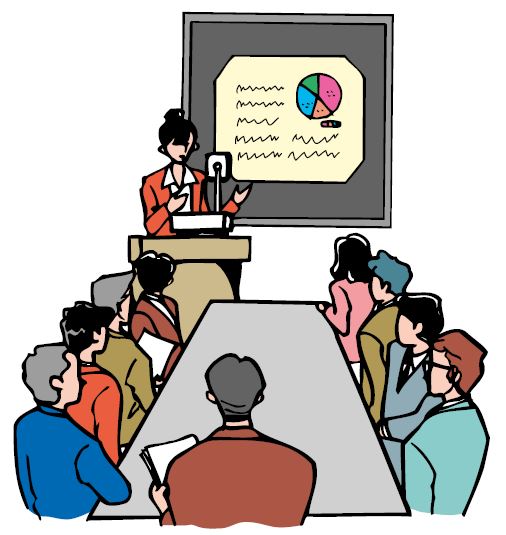Business Training in Japan Is Not Popular. OJT Is Popular. Why?
CONTENTS
By R. Kopp
Allow me to share three recent incidents related to training that took place at Japanese companies in the U.S.:
- An American discovered that his Japanese colleague wasn’t happy for him leaving the factory floor to come attend a training session.
- A training session was scheduled that seven Japanese were supposed to attend, but only one of them showed up.
- An American HR manager was told by the firm’s President that she could only schedule training seminars in the evening or on Saturdays.
Given that Japanese often emphasize their desire to develop human resources, such incidents are extremely puzzling to Americans. What’s behind this apparent Japanese negative attitude toward training? There are two primary reasons – that training is viewed as impractical and not relevant.
Training Not Practical and Relevant

Recently, I received an interesting comment on an evaluation form submitted by a Japanese participant in a training seminar I had conducted: “Yours is the first training seminar I’ve ever attended that didn’t make me sleepy.” I was glad to have the positive feedback, but at the same time this comment saddened me – what kind of training seminars had he been attending up until now that had failed to keep him awake? Unfortunately, this individual’s feelings about typical training in Japan are not unusual. Unlike training in the U.S., which strives to be practical, training in Japan is often not related directly to work contents. Anything directly relating the job is taught hands-on by one’s supervisor or more senior colleagues, in the workplace while you are doing your work. Training, by contrast, is likely to be conducted by an academic, with an ivory-tower approach and a dry-as-dust lecture type style. Years of experiencing this type of training have made many Japanese businesspeople view all training with contempt.
Training Seen as Personal Matter
Much training in Japan is aimed at personal development. To group-oriented Japanese, taking time away from pressing work activities, and away from the workplace where ones’ colleagues are slaving away, is considered a bit selfish. This is behind the displeasure of the Japanese when his American co-worker left the workplace to attend training. Furthermore, as training is seen as individual development, it’s in a sense a frill, and also something that one should do on one’s own time. Hence, the request of the Japanese company President to have all training be conducted on evenings and weekends – that way it would not interfere with work, and people should be happy to give their personal time to improve themselves.
The failure of the Japanese to report for the training session they had registered for can probably be traced to a combination of these two factors. When things got busy in their job, they felt badly leaving to go to training. They did not view training as central to their work, so it could be sacrificed with little harm done. And perhaps secretly they were relieved that they didn’t have to attend training, since they likely assumed that it would not be particularly interesting or applicable.
What can be done to help ensure that difficulties regarding training like the three examples above can be avoided?
The case of the Japanese who was displeased at his American colleague for going to a training session suggests that the content and importance of that training had not been adequately explained to all the members of the organization. In this situation, it might have been helpful for the American to alert HR about the concerns of his Japanese colleague, so that he could be given more explanation about the role and importance of training.
The situation of the Japanese who did not attend training is slightly more complicated. Certainly, Japanese aren’t the only ones who at the last minute decide to skip training when things get busy. In general, I think that HR needs to have a system whereby the departments of no-shows have to pay for people who register for training and don’t show up – without such a system, people will continue to fail to show up with impunity.
Several other efforts can help increase Japanese attendance at training:
- Invitation/information in Japanese. Japanese will become more excited about attending training when they receive the relevant information in Japanese, including a description of the content, qualifications of the instructor, and why the topic is currently important to the company’s business.
- Sanction from top management. Japanese are responsive to direction from the top of the organization. Invitations to attend a training session should come directly from the President, with a clear statement that attendance is important and expected. And the President should act as a role model by being sure to attend training himself.
- Requirements stated. In Japan, people generally don’t volunteer for training, they are told that they should go to training. If a training is a required one, it needs to be clearly conveyed to the Japanese that attendance is not optional.
The third case of the President who wanted training to be conducted evenings and weekends is a more tricky one. Finding out more about the President’s concerns about holding training during the day would be an important step for the American HR manager, who could then find ways to reassure him that any negative impact could be avoided. Presenting the President with data about how typical American companies, particularly similar ones located in your area, schedule training would also be helpful.
An underlying factor behind this issue of training is a different Japanese philosophy about how learning occurs. In the United States, we think of learning as something that happens at a set time and place. Learners receive a theoretical explanation, which they then apply to various practical situations after the course. In contrast, learning in Japan is more like an apprenticeship-style activity, with the instructor giving one-on-one demonstration, and then one-on-one feedback. Japanese often refer to this using the borrowed American term “OJT” (on-the-job training). It’s learning by doing and learning by experience, and it’s the kind of learning that Japanese businesspeople respect most.
Understanding this difference, one approach to getting training more respect from Japanese would be to find ways to make it more hands-on and experiential, thus making it more practical from the Japanese point of view.


